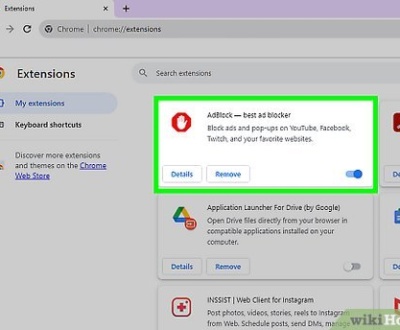The ideal number of internal links per page for SEO depends on content length, purpose, and relevance. A good rule of thumb is 1 internal link per 200-300 words, meaning a 1,500-word article should contain 5-10 internal links. These links help search engine crawlers understand site structure, distribute link equity, and enhance user engagement. However, excessive linking can lead to over-optimization and poor user experience. Best practices include using relevant anchor text, linking to authoritative sources, and maintaining a logical site structure. Regular internal link audits and strategic linking ensure optimal SEO benefits without overwhelming users or search engines.
Introduction
Internal linking is a fundamental aspect of search engine optimization (SEO) that refers to the practice of linking one page of a website to another page within the same domain. These links for SEO help search engine crawlers understand the internal link structure, distribute link juice, and enhance user engagement. Internal linking plays a crucial role in improving search engine rankings and providing a smooth user experience.
Importance of Internal Linking for SEO
1. Passing Link Equity
Internal links distribute link authority across a website, helping important pages rank better in search engine results. The flow of link equity ensures that target links receive the necessary boost for SEO ranking.
2. Improving Site Structure and Crawlability
Search engine crawlers use internal links to navigate and index a site efficiently. A well-structured site with an efficient hierarchy improves crawl depth, ensuring all important pages are indexed.
3. Enhancing User Experience
Internal linking guides visitors to relevant topics, increasing dwell time and reducing poor user experience. Contextual links in primary content enhance navigation for users and provide additional context, supporting user intent.
Factors Influencing Internal Link Quantity
1. Content Length
Longer content provides more opportunities for internal links without overstuffing. A 1500-word article should ideally have 5-10 internal links.
2. Page Purpose
Key landing pages and high-traffic pages may require more internal links than blog articles or low-traffic web pages.
3. Relevance of Links
Relevant links should be placed strategically, adding value to the reader and maintaining a logical site structure.
4. Site Architecture
A well-organized internal link structure makes it easier to determine logical internal linking practices.
Recommended Internal Link Density
| Content Length | Recommended Links |
|---|---|
| 500-1,000 words | 3-4 internal links |
| 1,000-2,000 words | 5-10 internal links |
| 2,000+ words | 10-15 internal links |
- A good rule of thumb: 1 internal link per 200-300 words.
- Vary based on content type; product category pages and e-commerce sites may need fewer, while pillar pages require more.
Best Practices for Internal Linking
- Use Descriptive Anchor Text – Provide clear context to users and search queries.
- Vary Anchor Text – Avoid keyword stuffing and stuffing in anchor text.
- Link to and from Important Pages – Prioritize high-converting landing pages.
- Update Older Content – Refresh content with new content links.
- Implement Breadcrumb Navigation – Improve seamless navigation experience.
Internal Linking Best Practices at a Glance
| Best Practice | Description | Benefits |
| Descriptive Anchor Text | Use clear, relevant phrases for links | Improves SEO and user understanding |
| Link Relevance | Connect topically related pages | Enhances site structure and organic rankings |
| Link Placement | Position links high on the page | Reduces bounce rate, improves engagement |
| Link Quantity | Aim for 5-10 links per 2,000 words | Balances SEO benefits with user experience |
| Regular Updates | Add links to older content | Keeps content fresh and improves site connectivity |
Avoiding Over-Optimization
Risks of Excessive Internal Linking
- Too many internal links can lead to link overload and overwhelm users.
- Over-optimized anchor text with exact anchor matches can trigger penalties.
Google’s Perspective on Link Quantity
Google advises against unnatural linking practices but does not specify a strict link limit.
Balancing SEO Benefits with User Experience
Keep links relevant and user-friendly rather than overloading pages with thousands of links.
Internal Linking Strategies
- Topic Clusters and Pillar Pages – Create a network of related content using the silo technique.
- Hub-and-Spoke Structure – Centralize authority around pillar content.
- Supporting Long-Tail Keywords – Improve search volume and search rankings for niche queries.
Technical Considerations
- Impact on Crawl Budget – Excessive links may waste crawl budget and lead to dead-end pages.
- Managing Site Depth – Maintain a logical site structure to reduce deep linking issues.
- Using Dofollow Links for Internal Linking – Ensure link juice passes between pages effectively.
Measuring Internal Linking Success
| Metric | Purpose |
| Page Views | Measures engagement |
| Bounce Rate | Evaluates poor user experience |
| Time on Page | Assesses user engagement |
| Internal Link Clicks | Tracks link effectiveness |
Tools for Analyzing Internal Links
- Google Analytics
- Ahrefs Site Audit
- Internal Link Juicer
- Screaming Frog SEO Spider
Regular Audit Procedures
- Identify and fix broken links.
- Ensure important pages have sufficient incoming links.
- Optimize anchor text distribution.
Common Internal Linking Mistakes to Avoid
- Over-Optimization – Excessive keyword rankings with naked anchor text.
- Inconsistent Anchor Text – Reduces clarity for search engines and user engagement.
- Broken Internal Links – Negatively impacts organic traffic and SEO game.
- Poor Relevancy Matching – Linking to random product pages weakens user intent.
Step-by-Step Guide: Implementing an Effective Internal Linking Strategy
- Conduct an Internal Link Audit – Identify existing links in header text, sidebar links, and navigation bar.
- Identify Internal Link Opportunities – Pinpoint relevant pages for deep linking.
- Optimize Anchor Text – Use varied yet relevant phrases.
- Implement Links Strategically – Place links in headers signal and primary keyword target locations.
- Monitor and Adjust – Track performance using SEO tools and adjust internal linking score.
FAQ Section
1. How many internal links is too many?
There’s no fixed limit, but aim for 1 link per 200-300 words to maintain balance.
2. Do internal links affect page load speed?
Too many links, especially image links, can slow down loading times, but proper optimization minimizes impact.
3. Should I use exact match anchor text for internal links?
No, vary anchor text to avoid keyword stuffing and over-optimized anchor text penalties.
4. How often should I update my internal linking structure?
Conduct an internal link analysis every 3-6 months to ensure relevant links remain active.
Conclusion
Internal linking is a powerful tool that enhances search engine visibility, strengthens domain authority, and boosts organic search performance. A well-structured internal link strategy ensures that external links and outgoing links complement internal linking practices. Keep a balance—too few links limit SEO potential, while excessive linking may overwhelm users. Implement best practices, monitor success stories, and refine your link profile for optimal results.
About us and this blog
We are a Full-Service Sales & Marketing provider that aims to help small to medium businesses increase their leads and sales while helping remove the business owners from their day-to-day activities so they can focus more on the long-term goals of their business.
Book a Meeting with us!
We offer Done-For-You Sales, Sales Coaching, and Advisory as well as Digital Marketing Services. If you want to increase the leads generated for your business and need some guidance and accountability, book a call with us now.
Subscribe to our newsletter!
More from our blog
See all postsRecent Posts
- How Do You Stop Google Ads May 9, 2025
- How to Make Money Off Social Media May 5, 2025
- How to Duplicate Page WordPress May 1, 2025









